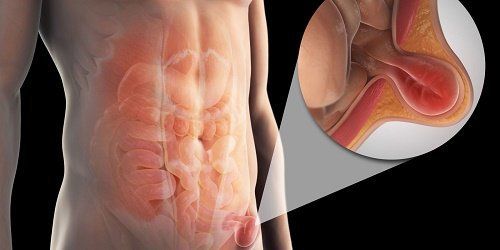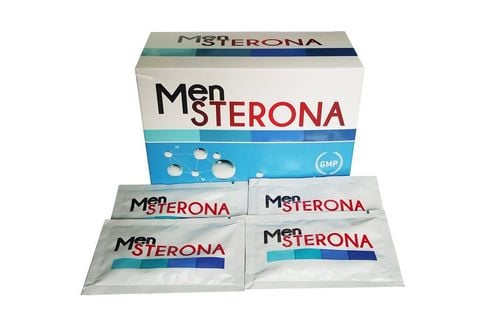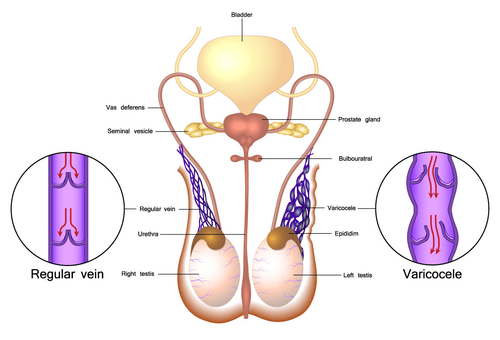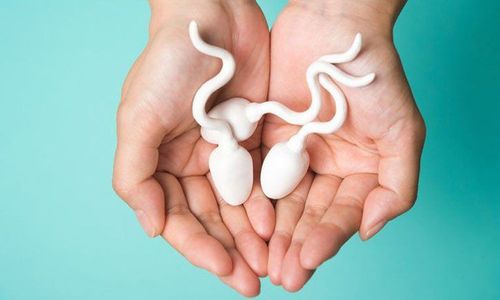This is an automatically translated article.
Varicocele is a common and common disease in men from adolescence and up. Treatment of varicose veins by embolization is currently being widely applied thanks to its high efficiency and limited invasiveness.1. Overview of varicocele
Varicocele is a condition in which the veins are weakened or the valves are lost, making it impossible for blood to flow to the general circulatory system and stagnation in the testicular system below. This leads to poor metabolism, increased temperature in the testicles, leading to impaired spermatogenesis, erectile dysfunction and even infertility.
2. Objects at risk
According to many studies, about 15-17% of adult men have varicose veins. In which, 90% of cases are in the left testicle and about 10% are in both sides. Varicose veins rarely appear before puberty when only 1% of boys under the age of 10 have it. In adolescence, the prevalence of the disease accounts for 8-10%. Particularly from adolescence and up, statistics show that the rate of disease increases to about 15% of the male community.Varicocele is a common and common disease that seriously affects male reproductive function. An estimated 15-25% of primary male infertility cases and 75-81% of secondary male infertility cases are caused by varicocele.

Giãn tĩnh mạch thừng tinh ảnh hưởng đến sức khỏe sinh sản ở nam giới
3. How to recognize varicocele?
In the early stages: Varicose veins often have no clinical manifestations. Many patients come to the clinic for infertility, then accidentally discover the cause is varicocele. In the late stage: The common symptom is that the patient feels a feeling of heaviness, pain, and discomfort under the testicles. When palpating, looking can see the venous plexus zigzagging under the skin. If it takes a long time, it can be seen that the side of the testicle with varicose veins is smaller than the opposite side. Up to 80-90% of cases of varicocele are in the left testicle.
4. Diagnostic measures
Diagnosis of varicocele is usually based on two forms:
4.1 Clinical diagnosis
Assess the patient in many positions: lying, standing. Combining visual and palpation to assess the degree of varicocele according to Dubin levels:
Grade 0: Difficult to recognize through clinical signs, only identified through ultrasound, angiography or other methods other diagnoses. Grade 1: When doing the Valsava maneuver, the varicose veins are palpated. Grade 2: When the patient is standing upright, the varicose veins are palpated. Grade 3: When the patient is standing upright, varicose veins are seen. Grade 4: Visible varicose veins zigzagging under the skin of the scrotum, whether the patient is standing or lying down.
4.2 Subclinical diagnosis
Color Doppler ultrasound Normally, the diameter of the seminal vein is less than 2mm, when the venous plexus is >2.5mm in diameter, it is diagnosed as dilated. There are 5 degrees of varicocele on Doppler ultrasound:
Grade 1: No varicocele in the scrotum, but observed reflux of the plexus of the spermatic cord in the inguinal canal. Grade 2: No dilatation in the supine position, but in the standing position, dilatation is seen and the reflux is localized above the testicle. Grade 3: No dilatation in the supine position, but dilatation in standing position and diffuse reflux above and below the testicle. Grade 4: The varicocele and regurgitation are seen when the Valsalva maneuver is performed in the supine position. Grade 5: Visible varicocele, with reflux even without Valsava maneuver. Ultrasound combined with abdominal computed tomography (CT) are necessary tests to help rule out cases of varicocele secondary to compression by retroperitoneal or pelvic tumors.
Semen analysis Semen analysis is indicated in cases of infertility to evaluate the influence of varicocele on sperm function.
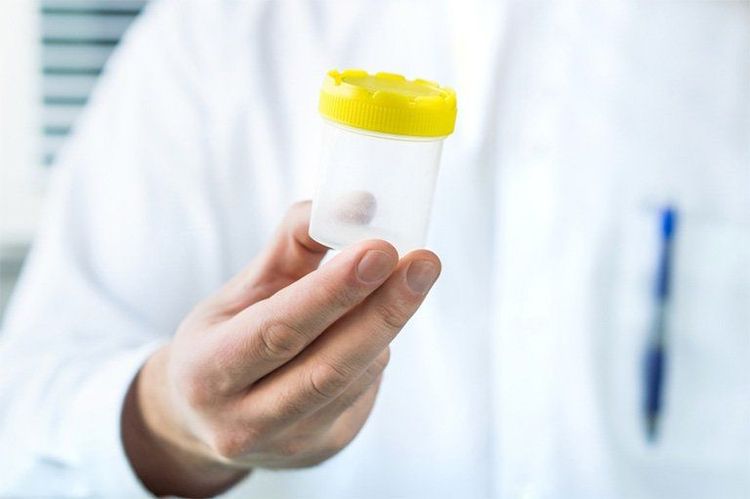
Xét nghiệm tinh dịch đồ giúp chẩn đoán giãn tĩnh mạch thừng tinh
5. Treatment of varicocele
Treatment modality of varicocele depends on the degree of dilation:
At mild level (grade 1,2) it is possible to monitor in combination with the use of drugs to prevent the progression of the disease. At a more severe level (grade 3,4,5), when the use of drugs is not effective, surgical intervention may be required (open surgery, laparoscopic surgery, microsurgery...). Currently, with the development of electro-optics, percutaneous varicocele embolization is being used commonly in Vietnam and is gradually replacing surgery due to the following advantages: minimally invasive, highly effective, no anesthesia or anaesthesia, no scarring, no risk of vasectomy.
Materials used: Metal coils (coils), balloons, scleroderma...
Under X-ray guidance, insert a fine needle (catheter) into the right femoral vein and then thread it up the vein medial and then passes to the left and the selective vascular node and branch of the spermatic cord are dilated.
The method of embolization treatment for varicocele has the following advantages:
High aesthetics due to not having to cut the skin in the groin and scrotum No risk of damage, vasectomy Effective treatment similar to surgery , including both local efficacy and effectiveness in infertility treatment. Short hospital stay and recovery, return to daily activities (< 24h) Can embolize both sides with only 1 venous access, There is no need for skin sutures like surgery. Only the common femoral vein is anesthetized, no general anesthesia or spinal anesthesia is required. Vascular embolization is an important technique in diagnosing and supporting the treatment of varicocele in particular and many other vascular diseases in general. When performing the procedure, patients should follow the doctor's instructions to achieve high therapeutic efficiency and reduce the risk of complications.
Customers can come to the Center for Reproductive Support - Vinmec International General Hospital. This is the leading center in Vietnam, which has developed and applied a comprehensive medical examination and treatment process, combining both gynecology and obstetrics and gynecology to provide the optimal method for each patient's case.
Advantages when customers choose Vinmec fertility center:
Equipped with modern equipment, clean air system according to international standards to ensure lab quality, single cabinet system to optimize quality embryo, improving the success rate for each cycle of artificial insemination. Implement most advanced assisted reproductive techniques in the world: ICSI (injection of sperm into the oocyte cytoplasm); support embryo escape membrane; Reproductive reserve: embryo freezing, sperm freezing, oocyte freezing to help customers take the initiative in giving birth at will, transferring embryos on day 5, minimizing pregnancy; male infertility techniques (PESA, MESA, TEFNA, TESE) Besides advanced reproductive support methods, a team of excellent doctors in the country and the world, with prestige and long-term experience in the field of infertility . To register for examination and treatment at Vinmec International General Hospital, you can contact Vinmec Health System nationwide, or register online HERE.




